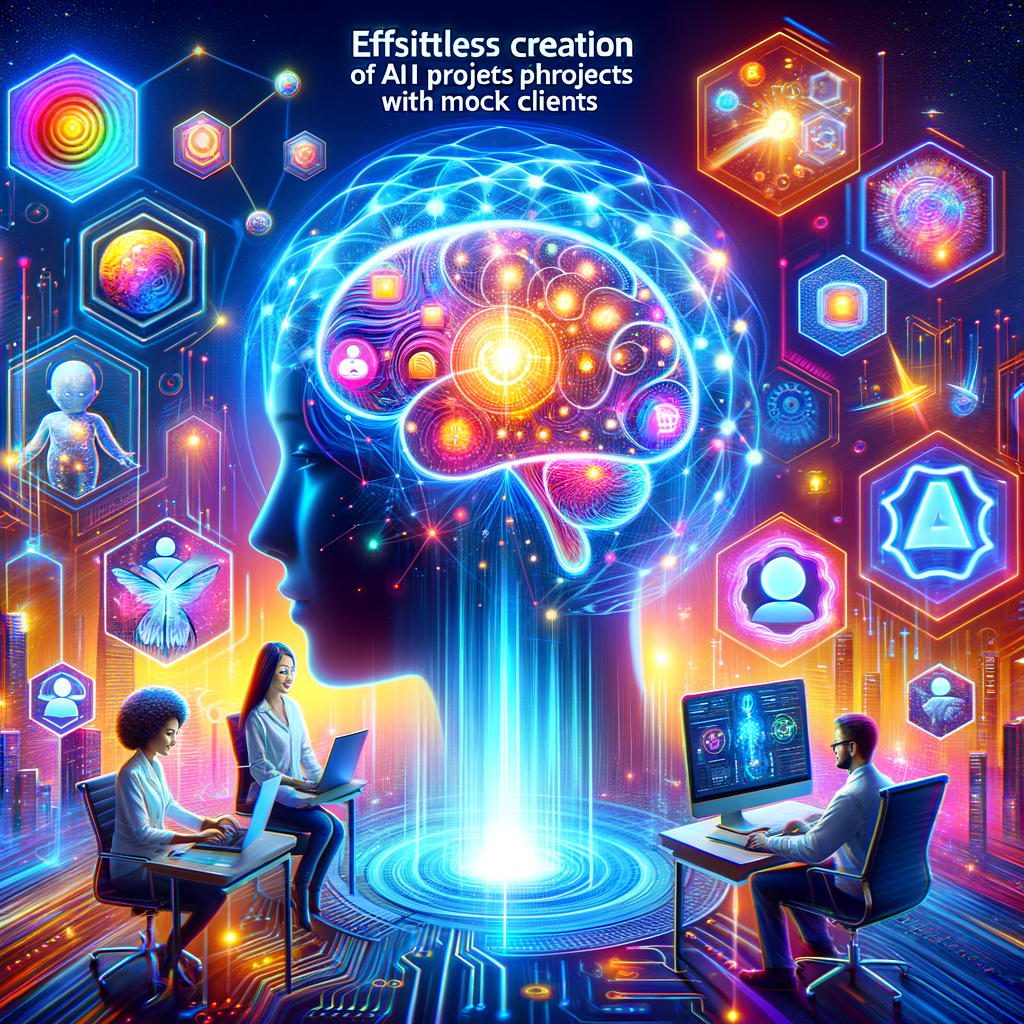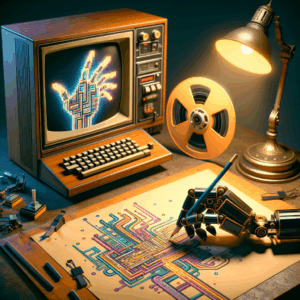
Stunning Mock Clients For Effortless AI Projects Creation
- Understanding Mock Clients and Their Importance
- Crafting Stunning Mock Clients
- Benefits of Using Mock Clients in AI Projects
- Challenges in Creating Mock Clients
- Tools and Techniques for Creating Mock Clients
- 1. User Personas
- 2. Empathy Maps
- 3. User Journey Mapping
- 4. Analytics Tools
- Implementing Mock Clients in AI Projects
- Real-Life Examples of Successful AI Projects Using Mock Clients
- Example 1: Spotify
- Example 2: Amazon
- Example 3: Netflix
- The Future of AI Projects and Mock Clients
- Conclusion
- FAQs
- References
Understanding Mock Clients and Their Importance
In the ever-evolving world of digital technology, creating AI projects can often feel overwhelming. This is where mock clients come into play. A mock client represents an ideal or fictitious customer that helps teams visualize, create, and test AI projects without the complexities of real-life interactions. Think of mock clients as the guiding lights that show you the path towards effective solutions.
Mock clients simplify the project creation process. With a well-defined target or persona in place, teams gain clarity on their objectives, user needs, and project goals. Without this guide, teams might wander off track and develop products that don’t meet user expectations.
By integrating mock clients into the initial stages of an AI project, teams can significantly enhance productivity. They work as a reference point, allowing teams to focus on creating features and functionalities tailored to user needs.
Crafting Stunning Mock Clients
Creating a stunning mock client involves understanding your target audience deeply. Reach out to different groups within your desired market to gather data. Next, craft detailed personas by combining insights from your research. This step ensures that you truly grasp what your potential users value.
Start by collecting demographic information. Analyze factors like age, gender, income, and education. This information helps shape the persona’s background. Next, dive into behavioral data, focusing on how potential users interact with technology. Understanding their pain points enhances the mock client’s effectiveness and relatability.
Once you gather crucial insights, it’s time to synthesize them into a compelling story. A stunning mock client doesn’t just rely on statistics; it tells a story that resonates. This narrative should cover their goals, challenges, and anticipated solutions your AI project will offer.
Benefits of Using Mock Clients in AI Projects
Using mock clients in your AI projects offers numerous advantages. First, they enhance clarity around project objectives. Teams can reference the mock client to stay aligned with user needs. This focus can drastically improve the overall quality of the project and streamline decision-making processes.
Second, mock clients foster innovation. When teams visualize their target audience, they can brainstorm new features and functionalities. This creative process often leads to unique solutions that address user pain points more effectively.
Finally, utilizing mock clients promotes collaboration. Every team member can refer back to the mock persona, ensuring everyone remains on the same page. This shared understanding makes communication smoother, helping teams work more effectively together.
Challenges in Creating Mock Clients
Despite the numerous benefits, creating effective mock clients isn’t without its challenges. One primary issue is ensuring the mock client remains relevant and accurate. With market demographics evolving, keeping the information updated can be a daunting task.
Another challenge lies in the tendency to generalize. It’s essential to avoid creating a mock client that represents a broad group without specific traits. A vague mock client may lead to misunderstandings about user needs.
Additionally, over-reliance on a mock client might limit creativity. While it’s beneficial as a reference, teams must remember the importance of real user feedback. Balancing insights from the mock client with actual user data can yield more effective outcomes.
Tools and Techniques for Creating Mock Clients
Creating stunning mock clients doesn’t require extensive resources. Several tools, techniques, and methodologies exist to streamline the process. Here are a few tried-and-true options:
1. User Personas
Creating user personas is one of the most effective ways to develop mock clients. Start by conducting surveys and interviews with target users. Utilize this data to uncover pain points, motivations, and goals. Online tools like Xtensio and Canva offer templates that make this process simple and visually appealing.
2. Empathy Maps
Empathy maps deepen your understanding of your audience. Use them to visualize how customers think and feel about your product. This technique involves four quadrants: “Says,” “Thinks,” “Does,” and “Feels.” This tool helps ensure that your mock client resonates on an emotional level.
3. User Journey Mapping
User journey maps visualize the steps users take when interacting with your product. Mapping this out offers insights into potential problems and highlights opportunities for enhancement. Tools like Miro help create user journey maps collaboratively.
4. Analytics Tools
Leverage analytics tools to gather data about real user interactions. Tools like Google Analytics and Hotjar can provide insights that help refine your mock client. Keep an eye on behavior patterns, as these insights can boost your mock client’s relevance.
Implementing Mock Clients in AI Projects
Once you develop a stunning mock client, integrating it into your AI projects is crucial. Start by introducing the mock client to your team. Ensure everyone understands the personas’ goals and motivations. This shared knowledge creates a unified vision and helps shape project discussions.
Next, use the mock client throughout all project phases. During brainstorming sessions, refer back to the mock persona to ensure alignment. For instance, when discussing new features, ask how these additions provide benefits to the mock client. This practice keeps the focus user-centered.
Additionally, continually evaluate and adjust your mock client as the project progresses. Gather feedback from team members and, if possible, real users. This iterative approach ensures your mock client remains relevant and effective throughout the project lifecycle.
Real-Life Examples of Successful AI Projects Using Mock Clients
Many successful AI projects harness the power of mock clients. These case studies illuminate how having a well-defined persona can boost results. Let’s explore a few notable examples:
Example 1: Spotify
Spotify is a fantastic case of using mock clients for product development. The digital music platform creates user personas that reflect different listening habits. By understanding users’ motivations—whether they listen during workouts, commutes, or at home—they tailor unique playlists and recommendations.
Example 2: Amazon
Amazon employs mock clients to streamline user experience on its platform. They analyze customer behavior patterns and preferences to personalize shopping experiences. This method helps them create mock personas that represent diverse user demographics, which in turn improves user satisfaction.
Example 3: Netflix
Netflix is renowned for its user-centric approach. They gather extensive data on viewing habits and preferences, enabling them to create detailed mock clients. This approach helps them tailor recommendations and curate content that appeals to various audience segments.
The Future of AI Projects and Mock Clients
The landscape of AI is constantly changing. As these technologies evolve, so too will the methodologies for creating and implementing mock clients. We can expect new tools and techniques to emerge that make the process even easier.
Artificial Intelligence may play a pivotal role in enhancing mock client creation. Imagine algorithms that analyze data and generate detailed personas based on user behavior patterns, preferences, and interactions. This advance could streamline the development process and provide unparalleled insights into user needs.
Additionally, as companies become more data-driven, they may rely on real-time feedback. Combining mock clients with continuous user feedback can lead to projects that adapt rapidly to changing user expectations. This shift could redefine how we create AI projects in the future.
Conclusion
Stunning mock clients play an essential role in the successful creation of AI projects. They bring clarity, foster innovation, encourage collaboration, and improve decision-making. By crafting detailed personas and implementing them effectively, teams can create projects that meet real user needs.
The journey doesn’t end with just creating mock clients. Continuously evaluating and refining them will enhance their effectiveness and relevance. As the world of AI evolves, the methods for building and leveraging mock clients will adapt too, paving the way for even more dynamic and user-centric projects.
FAQs
1. What is a mock client?
A mock client is a fictional representation of a target user, designed to help teams envision user needs and preferences.
2. How do I create a mock client?
Start by researching your target audience, gathering demographic and behavioral data. Then synthesize this information into a detailed persona or narrative.
3. Can mock clients evolve over time?
Yes, mock clients should be updated regularly based on new insights, changes in the market, or shifts in user behavior.
4. Are there tools available for creating mock clients?
Yes, tools like Xtensio, Miro, and Canva can help researchers develop effective mock clients and user personas.
5. How can mock clients improve project outcomes?
Mock clients clarify user needs, align team focus, and inspire innovative solutions, ultimately leading to higher-quality projects.
6. What are some common mistakes in creating mock clients?
Common mistakes include generalizing too much, relying solely on existing data, and failing to update the persona regularly.
7. How do I use a mock client throughout a project?
Refer to your mock client during brainstorming sessions, feature discussions, and design reviews to ensure alignment with user needs.
8. Can I create multiple mock clients for one project?
Absolutely! Creating multiple mock clients can help address varying user needs and preferences, leading to more tailored solutions.
9. How do I validate my mock client?
Gather feedback from real users and compare it against your mock client to see if their needs align.
10. What’s the main takeaway about using mock clients?
Mock clients are invaluable tools that help teams focus on user-centric outcomes, ultimately leading to more successful AI projects.
References
[1] Nielsen Norman Group: User Personas
[2] UX Design: Empathy Maps
[3] HubSpot: User Journey Mapping
[4] Adobe: Creating effective User Personas
[5] Medium: The Importance of User Personas in AI Projects

